Ball Pythons bite very rarely. Overall all, they are an incredibly docile species that prefers passive defenses, such as rolling into a ball, to biting. If a bite does it occur, it’s usually because the snake was stressed from shedding, illness, or being in a new environment. Occasionally a bite may happen during feeding, but this is easily avoided by using feeding tongs.
In this article, I’ll explain Ball Python defensiveness, and how I avoid bites when looking after my snakes…
Do Ball Pythons bite their owners?
Ball Pythons are not an aggressive species, and in general, they simply do not bite their owners. They are in fact one of the calmest, most peaceful snakes available in the pet trade. I even have Ball Pythons I’m comfortable letting children handle.
The reluctance that most Ball Pythons have to bite is probably due to the fact they have another, more pacifistic defence mechanism called “balling”. Balling is of course where the species gets its name and consists of simply rolling into a ball with the head protected in the centre.
This is a great way for a snake to protect itself, as the head is its only real weak spot. Also, let’s face it, you probably won’t bite an enemy to death without any venom! Better to just hide and wait out the attack.
The behaviour is so ingrained that captive Ball Pythons still have a strong instinctive urge to do it, with shy animals suddenly retracting into a ball when you disturb them – even after years in your company.
Balling is in fact such a successful defence mechanism that several other snake species have adopted it. The Calabar Python/Boa (Calabaria reinhardtii) and the American Snail Eater (Dipsas articulata) both employ it, despite being completely unrelated.
All in all, Ball Pythons are not aggressive, and 99 times out of 100 will choose this highly effective balling tactic over biting.

Do Ball Pythons get aggressive? Ever?
In all honesty, I don’t think Ball Pythons every get “aggressive”, there are unusual circumstances where they will get defensive – and even bite – though. With such a docile species, this is quite uncommon, and it’s important for us to understand that defensiveness is born out of fear and stress. It is not a sign of an animal that wants to be aggressive.
The following circumstances can bring out defensiveness in Ball Pythons:
- When stressed. This could be from illness or even excessive handling. Occasionally, it can also be when something is wrong with husbandry. For example, a snake may become stressed if it doesn’t have a suitable hiding place.
- When getting ready to shed. Shedding is an incredibly stressful time for snakes, and some will get very defensive. The main reason for this is that an opaque liquid separates their old skin layer from the new, and this temporarily impairs their vision. They feel particularly vulnerable at this time.
- As a hatchling. Some baby Ball Pythons will nip, not many, but some. This is probably due to the fact balling may not be enough to protect them. A large rat could easily eat a baby snake, but defensive striking may be enough to scare one off. These babies quickly grow out of nipping with gentle handling for 5-10 minutes twice a week. Use gloves to get them out and problem solved!
- When protecting eggs. Mommy Ball Python doesn’t want you to take her eggs, so yes, she might bite!
- When they first arrive. Whether you’ve just picked them up at the pet store, or they’ve been shipped to you, some Ball Pythons hate being transported. These ones do become agitated and may strike when you take them out. This is still a low proportion of animals, however.
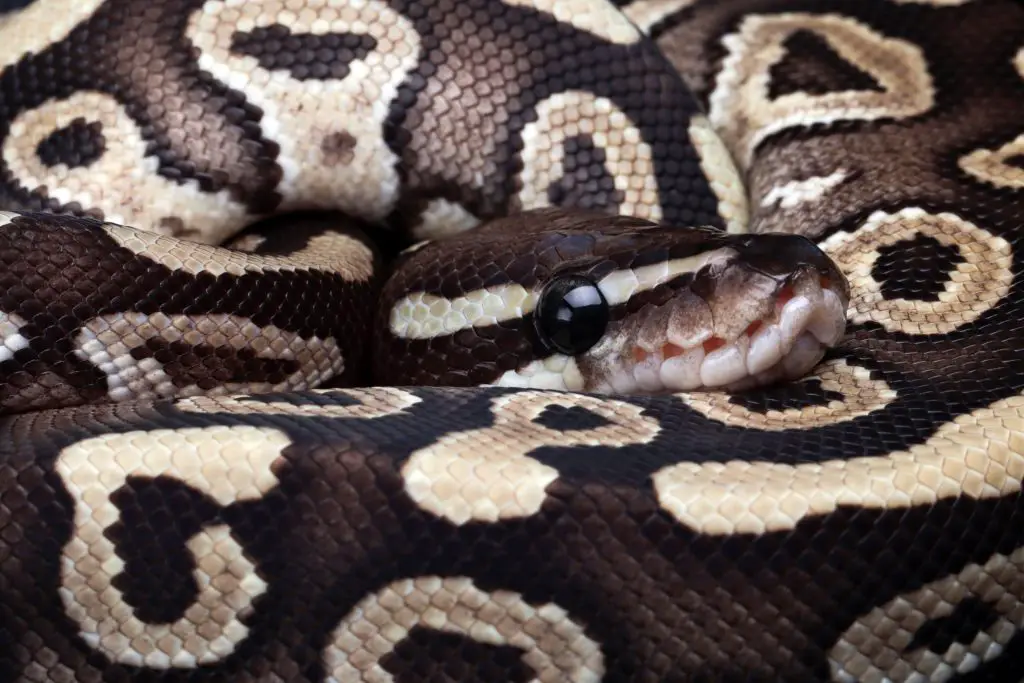
Do snakes recognize owners?
Snakes certainly do recognize their owners. Some species, like the King Cobra for example, can even learn when feeding time is and respond to tapping on their enclosure.
The general consensus is that species like the Ball Python recognize their owners through our scent, our behavior and possibly our voice. This doesn’t guarantee that they’ll never bite you though.
Even though they can recognize our smell, it’s easy for them to get confused if they can smell their favorite food too.
That’s why if you are going to feed your snake, it’s best to do it with tongs. A nice tasty rat is just a little too exciting for them to always remain focused on who or what exactly they’re striking at.

Are ball pythons friendly?
Ball pythons are not friendly like mammalian pets such as cats, dogs or hamsters. So, if you’re looking for affection, they aren’t the pet for you. When keepers refer to this species as friendly, what we really mean is docile. They are incredibly docile, but generally speaking they really don’t care whether they see us or not.
That said, these snakes do vary quite a bit in temperament, and some do enjoy coming out of their enclosures to explore and climb (usually on you) once or twice a week: this is about as good as it gets with reptiles! They might not give you affection, but at least they are slow-moving and can be handled easily.
In one of the articles on this site, I discuss a female Ball Python of mine who genuinely seems to enjoy time out of her enclosure, and expresses interest in investigating every nook and cranny of the room I keep her. You can read more about her, and Ball Python temperament in general in our article on whether they like to be held.
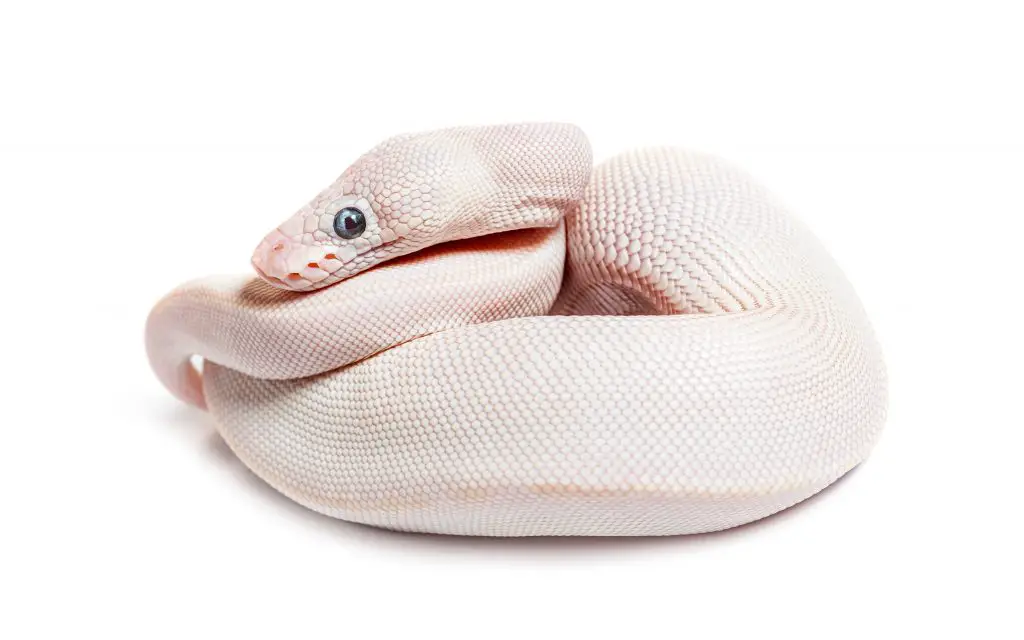
Do Ball Pythons have teeth?
We’re going to discuss Ball Python bites and aggression in a moment, but first let’s look at the hardware involved…
Although they look quite soft and dopey, Ball Pythons do have teeth. They have four rows in their upper jaw and two in the mandible. These teeth are recurved, meaning that they curve backwards to help trap prey. In general, an adult Ball Python should have around 100 teeth that are continuously replaced if they fall out or break.
A snake’s teeth always reflect their function, having a size and form that allow them to carry it out.
The teeth of Pythons and other non-venomous snakes are aglyphous, meaning they lack a groove and are not used for venom delivery. In these species, the teeth have solely a gripping function. This doesn’t mean they don’t vary between species, however. Generally, they are adapted to grip prey appropriately, and will be as big as they need to be for this.
In small, invertebrate-eating colubrids like the DeKay’s Snake (Storeria dekayi), the teeth are about as dangerous as you would imagine. A bite from this species feels like almost nothing – if you can get them to bite at all.
In species like the Emerald Tree Boa (Corallus caninus), which eat arboreal rodents and birds, the teeth are HUGE! They obviously need to latch on extremely well to avoid dropping a prey item or letting an agile one get away. I haven’t been bitten by an Emerald Tree Boa, but what I’ve been told is that it’s a bite you won’t be forgetting…
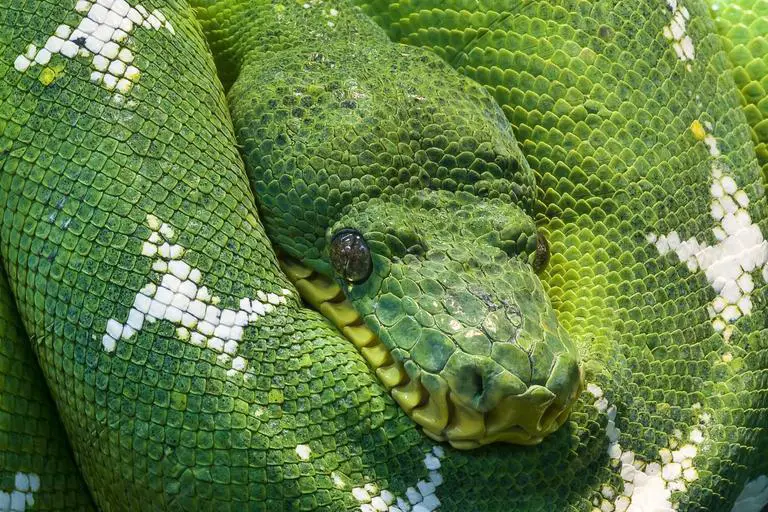
So, how big are Ball Python teeth?
Ball pythons, on the other hand, are rodent specialists, and this means that their teeth are in-between that of the little DeKay’s Snake and the Emerald Tree Boa. To grip rodents, the teeth must pierce a layer of fur and hold them tight to prevent fighting back during constriction. Ball Python teeth have evolved to be big enough to do this, no larger.
All-in-all, this adds up to medium sized teeth. Nothing too scary, but not as puny as those of most colubrid species.
Do Ball Python bites hurt?
Ah, and now the question we’ve all been waiting for! And the answer is… it depends. Ball Python bites hurt a little, but probably not as much as you’d expect. Overall Ball Python bites aren’t very painful, but it’s important to remember that there are two types of bites.
The first type is the defensive or aggressive bite. This is a light tap, almost like a high five. It lasts a second.
The second type is the feeding response bite. If you aren’t careful feeding a Ball Python, you can get bitten. When a bite occurs during a feeding, the snake will often hang on and warp around your hand/arm for a few seconds until they realise its mistake.
Personally, I’ve been bitten by a lot of creatures, from Boas to hamsters, and I don’t find Ball Python bites painful.
They’re no worse than a cat scratch. I still don’t like being bitten, but the worst bites I’ve ever sustained were from a dog and a large snapping turtle. Those bites really, really hurt. Ball Python bites have got nothing on them!
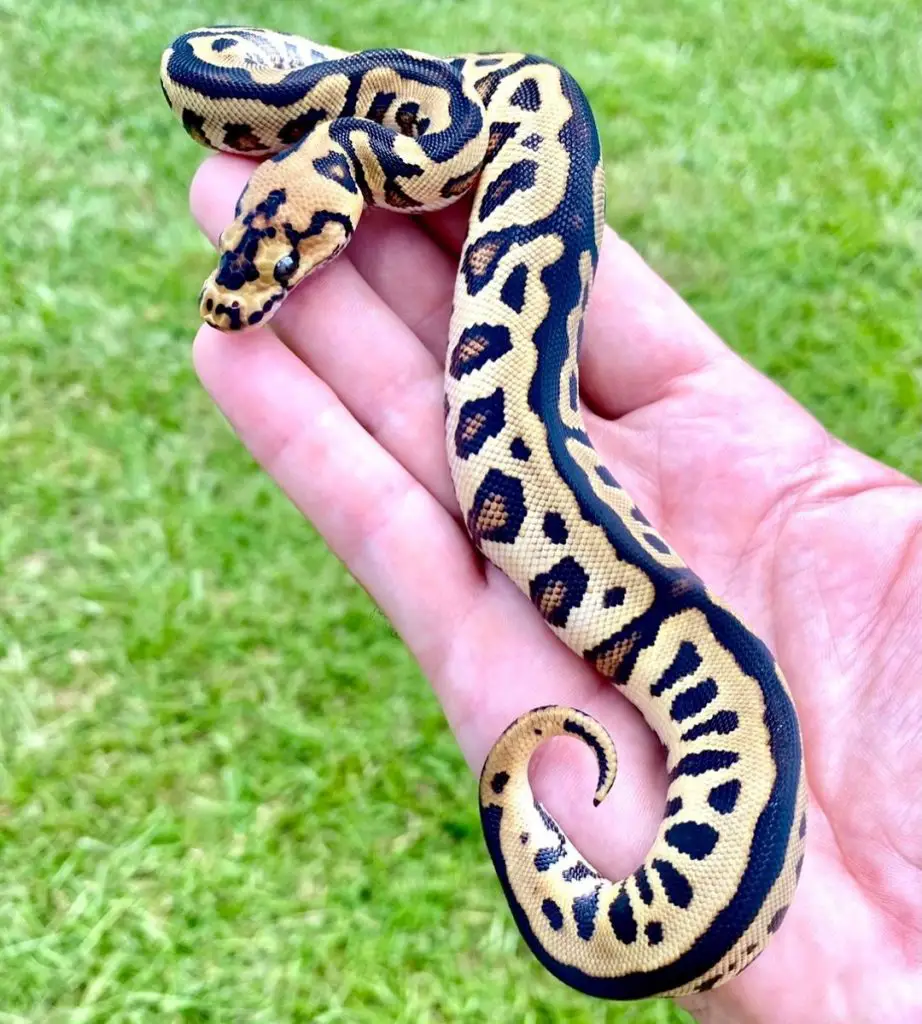
What does a Ball Python bite feel like?
Defensive Ball Python bites feel like really fast pinpricks. It’s almost as if you’ve put finger in a box of thumb tacks for a split second. Feeding response bites feel like getting caught on brambles and is more painful than a defensive bite. Both types of bite hurt more on your fingers than elsewhere – wearing gloves if you’re nervous could be a good solution.
What to do if a Ball Python bites you
If a Ball Python bites and latches on, wait until it lets go of its own accord. I’ve seen lots of YouTube videos and advice about various methods for getting snakes off. None of them really work, they just increase the stress on the animal and yourself.
The truth is that if this species bites you, they will simply let go when they realise you’re not a tasty rodent. You just need to wait. Fortunately, this isn’t too common, and completely avoidable in the first place! Just read the next section for tips on how.
After any bite, not matter how quick, it’s important to wash the site with soap and water. Don’t cover the site with a band-aid or anything like that, just let it heal naturally like any small scratch.
Infections from small snake bites are exceedingly rare, but if itching, swelling, or redness occurs after several days then a trip to the doctor is advised.
For another opinion, why not check out this helpful post from PetMD: What to do if your pet snake bites you
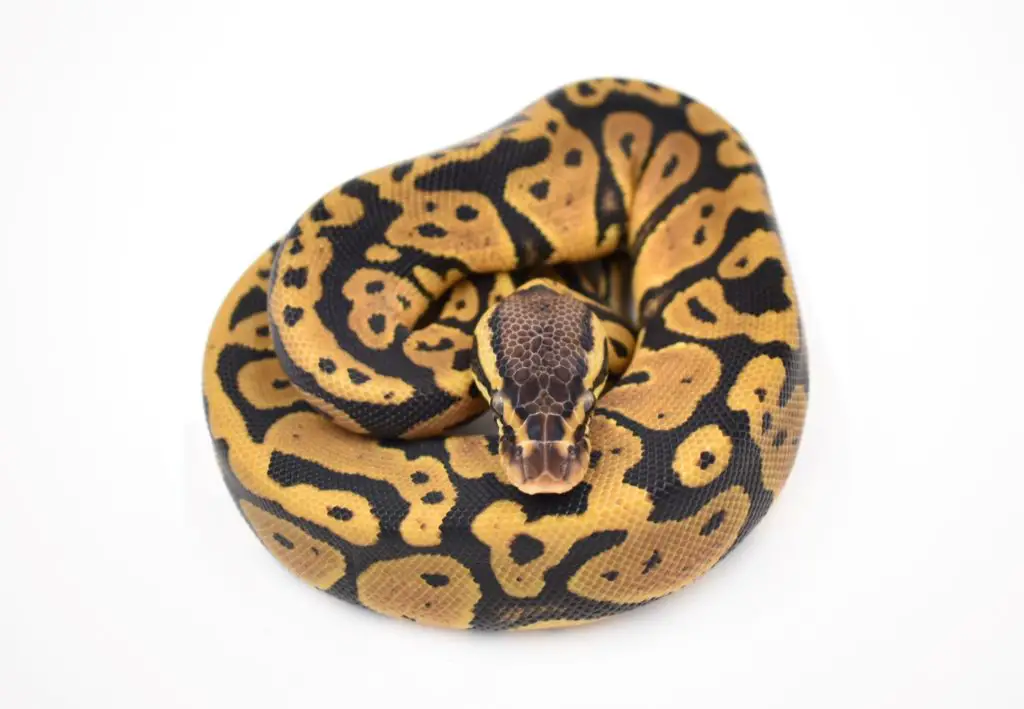
Can a Ball Python choke you?
A lot of nature documentaries describe pythons as super strong constrictors that choke the life out of anything that moves… To an extent, this is true, they are very strong. These shows do like to exaggerate their killer tendencies a little though. After all, it’s about getting ratings!
The truth is a python has to be pretty big to be able to choke you. Ball Pythons cannot choke you. There is no circumstance where they could ever grow big enough for this. Nonetheless, they can squeeze quite firmly if they get afraid you might drop them.
They don’t mean any harm by it, they’re just nervous about being high above the ground. If this freaks you out, simply unwrap the snake tail first. Using this method, medium sized constrictors are very easy to remove.
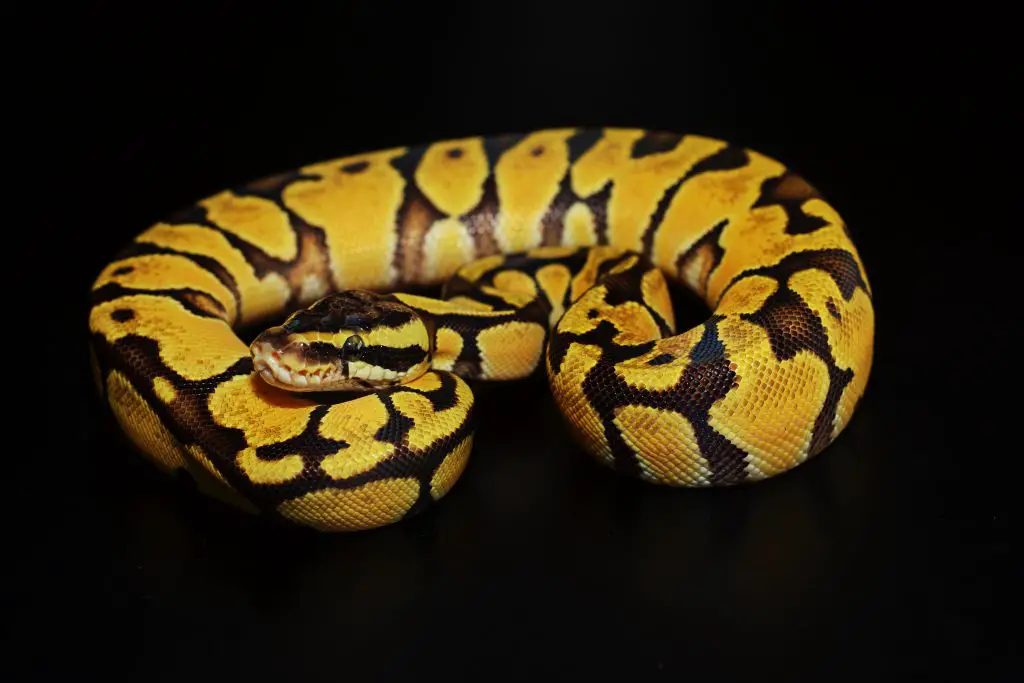
What happens if a Ball Python bites itself?
Now I know this sounds unlikely, but I have seen it before. Generally an accidental “self-bite” happens during feeding. A hungry Ball Python can get so excited that it simply bites in all directions.
Just the other day, in fact, one of my females burst out of her tub at feeding time and struck wildly at thin air. I have no idea what she was aiming for – and I don’t think she did either!
Fortunately, if a Ball Python bites itself it usually lets go without doing any lasting damage. Very occasionally, however, the bite can become infected and cause an abscess. When left too long abscesses can lead to septicemia.
If your Ball Python bites itself, it will usually result in a very small (or even invisible) wound. In this case, disinfect the wound with some betadine or veterinary anti-bacterial ointment when it has calmed down. Monitor the wound for several days and take the animal to a vet if there are any signs of swelling.
In the event of an open wound, you must always take your snake to a vet in case stitches are required.
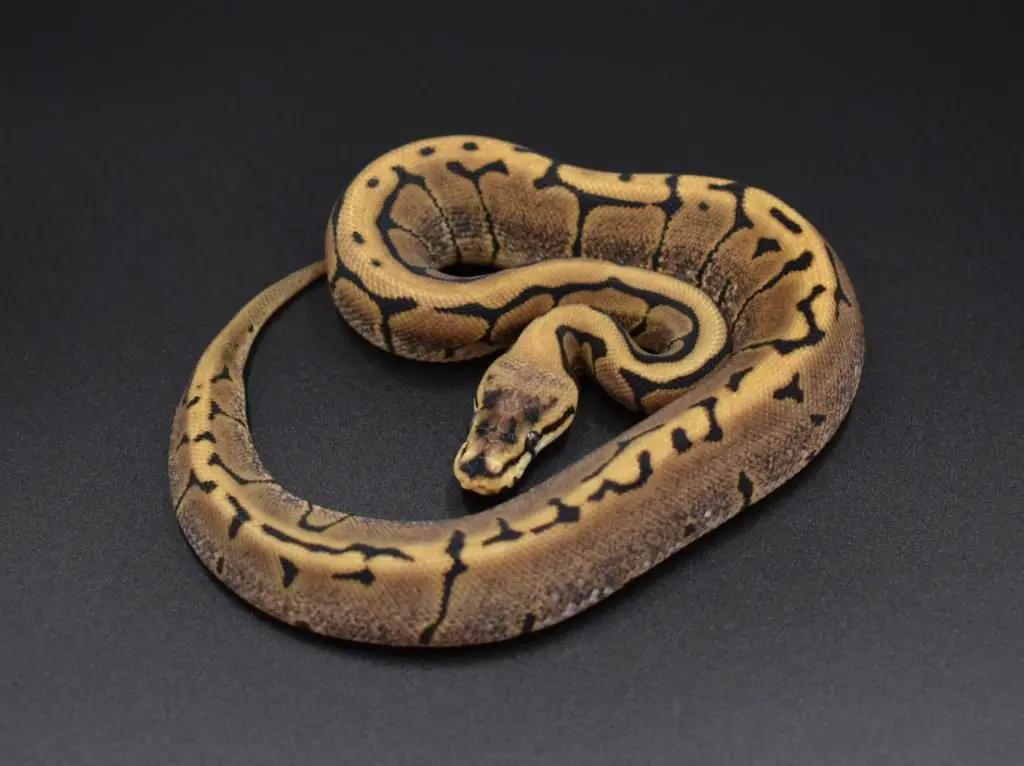
How to avoid being bitten
To avoid bites it’s important to understand Ball Python body language so you can recognize the signs they give us. These snakes use a variety of cues to decide when to strike (if at all). Thermoreception (heat sense), vision and olfactory cues are all used together to determine when to strike at food or a threat. Often, Ball Pythons seem to be cautious strikers, needing some winding up before striking, kind of like a jack in the box.
Fortunately, this means that before they strike their posture will give you clues that they’re thinking about it. To strike, a Ball Python needs to wind its neck into an s-shaped curve, which will give it enough length to launch forwards with. When getting ready, it’ll wind its neck up steadily until poised with the number of coils it thinks it’ll need.
When not thinking about striking, Ball pythons adopt other body postures. Let’s look at some photos so we can see the difference:
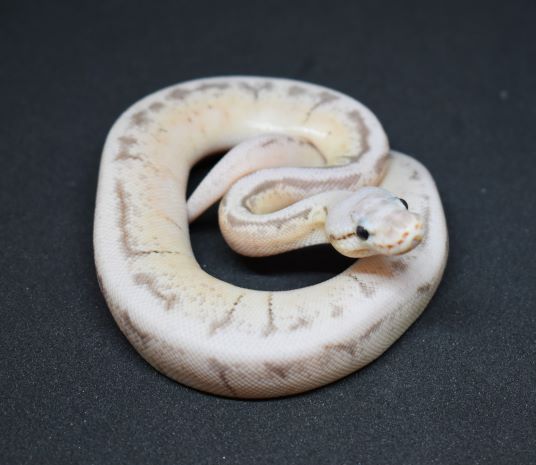
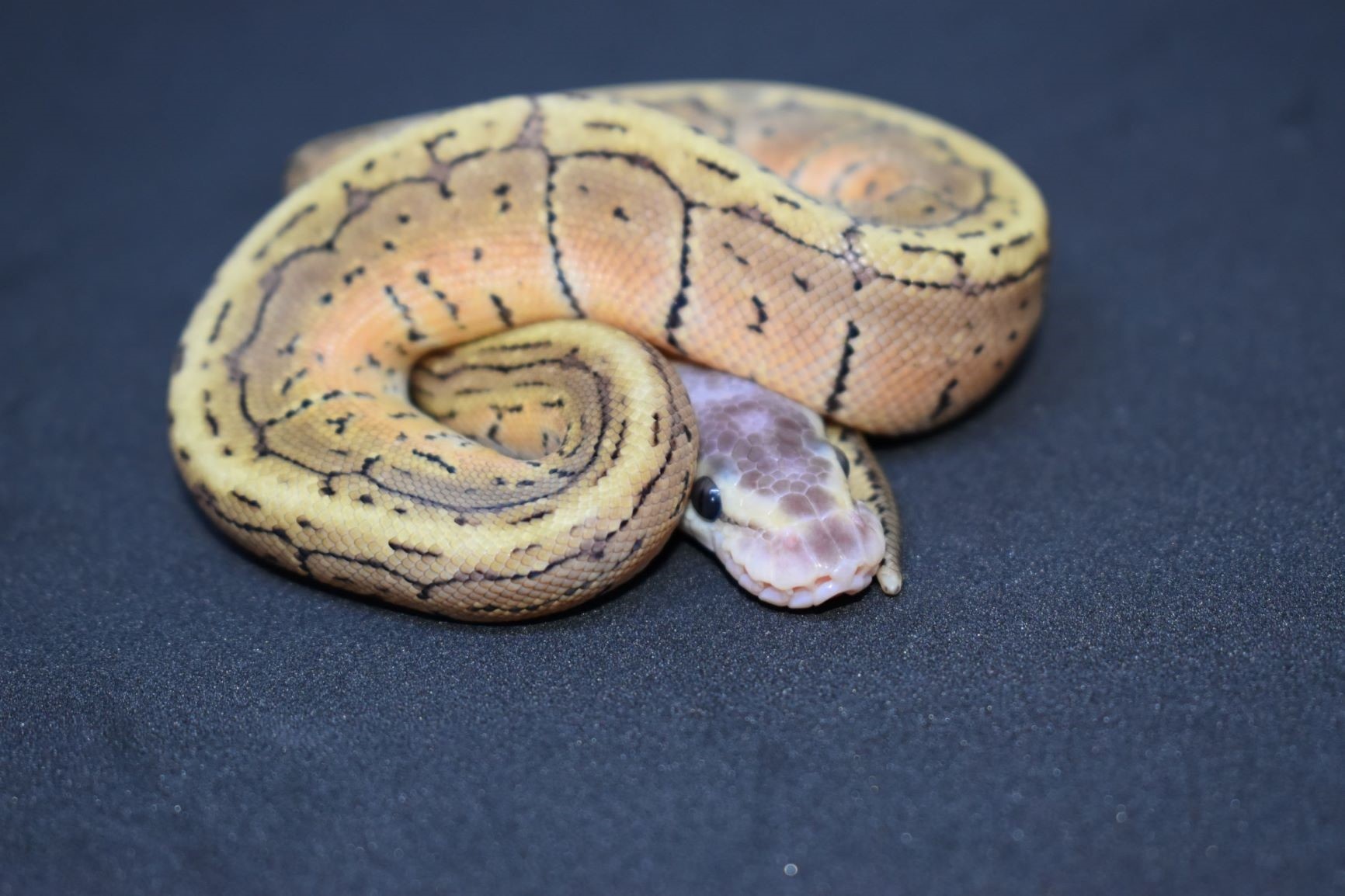
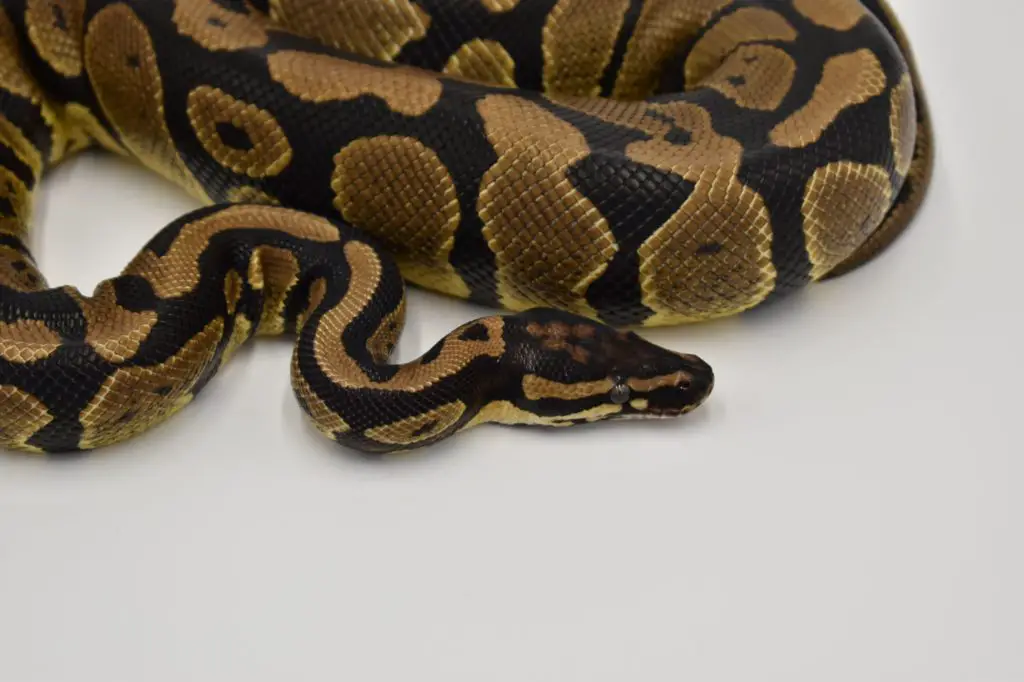
Other tips for avoiding bites
Apart from learning to understand their body language, there are some other top tips that can help avoid a bite:
- Always use tongs or forceps to feed your snake!
- For regular handling, make sure no rodents or feeding paraphernalia are in the room.
- Wash your hands before handling if you’ve been in contact with other animals.
- Handle your pet during the day – not after dark, when they are in feeding mode.
- If your pet lays eggs, get an experienced breeder to help remove them.
- Do NOT handle a new pet for a week. They need their space! This can help get them feeding sooner too.
- Cover the enclosure of a new pet with a towel or sheet, this will reduce stress and help them chill out.
- Remember that Ball Pythons are ambush predators. Never put your hand in front of the entrance to their hiding place.
- If you must handle an aggressive snake, drop a pillowcase or t-shirt on top of it. This usually scares them and switches them into “retreat mode”.
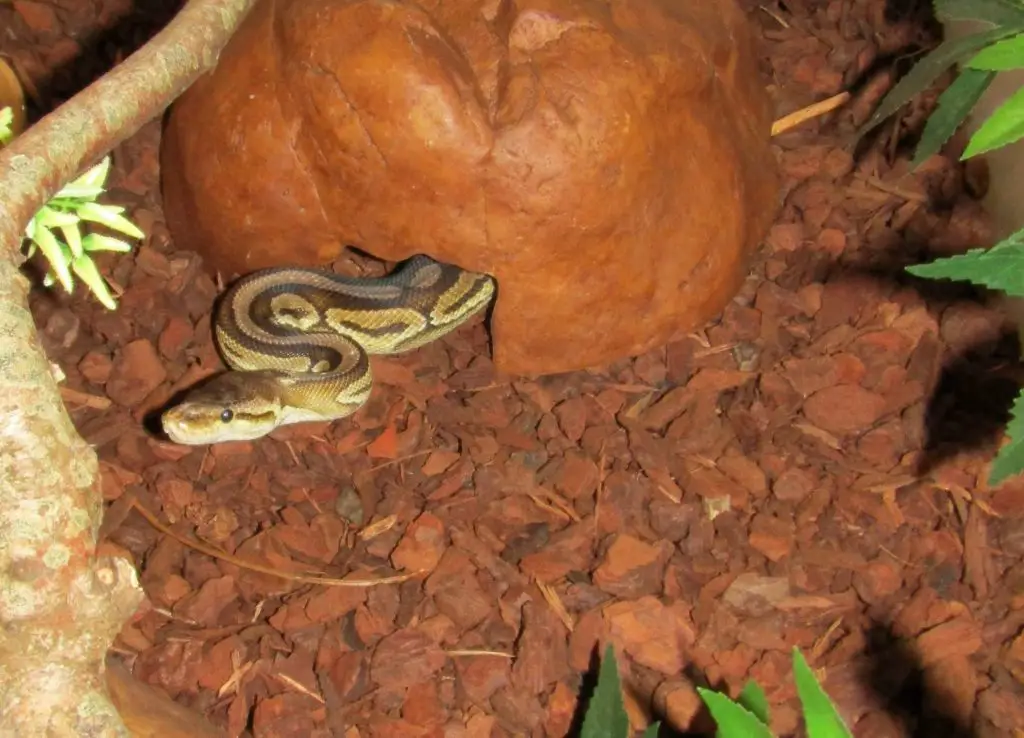
What snake is least likely to bite?
If you’re still considering getting a pet snake, and aren’t sure whether a Ball Python is the best choice, then let me take a minute to explain which snakes bite the least. Take a look at the list below:
- Egg Eating Snakes
- Ball Pythons
- Rosy Boas
- Corn Snakes
- Solomon Island Boas
- Ringneck Snakes
- Eastern Hognose Snakes
- Western Hognose Snakes
- Milk Snakes
- Boa Constrictors (when handled regularly as babies)
Looking at this list, it’s Ball Pythons, Rosy Boas, Corn Snakes, Milk Snakes, Western Hognoses and Boa Constrictors that make the best pets, and are the most widely available.
Nonetheless, it’s important to remember that the one with the puniest teeth is the Corn Snake, followed closely by Milk Snakes (we’re not counting the Egg-eating snakes because they’re hard to find captive-bred!).
If you really want a very, very harmless snake then the Corn snake is probably your best bet. Ball Pythons do have larger teeth, though you wouldn’t know it most of the time.
The thing is, if you keep snakes you will get bitten sooner or later. Usually it happens during a feeding accident, and you’ve forgotten about it around 10 minutes later.
So, getting to the point… Ball Pythons are one of the least likely snakes to bite, but do have slightly larger teeth than Corn Snakes.
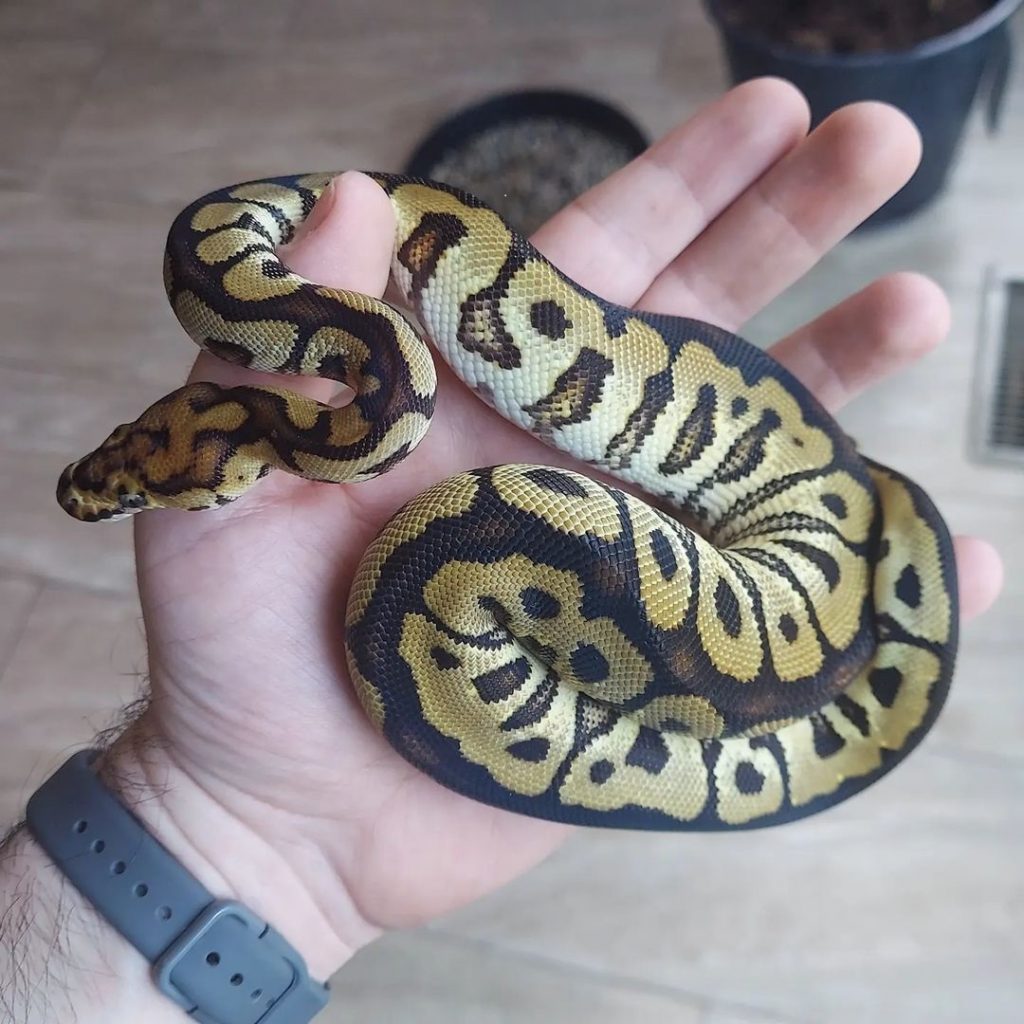
Do Ball Pythons Bite? Not often, and it doesn’t really matter anyway!
Ball Pythons are not an aggressive species. They tend towards passive defences like the balling behaviour or plain retreat. This is partly why I like them so much, as do hundreds of thousands of other snake keepers around the world. They’re a calm, gentle, inquisitive species that can be a companion to you for 30 years or more.
What’s more, these snakes really aren’t capable of inflicting dangerous or painful wounds, they just don’t have the hardware!
Whether they bite should be at the bottom of your list of concerns when buying a Ball Python. Focus on learning how to care for them and understand them, instead. Once you start keeping them, you will see that the benefits far outweigh the very slight risk of one day being bitten!
Also on this topic:
- Ball Python body language
- How to handle Royal Pythons
- Are female or male Ball Pythons more aggressive?
- Why is my Ball Python striking at me?
- Do Ball Pythons like to be held?
- Is a Ball Python a good pet?
For more on Ball Python temperament in general:
Back to the Ball Python temperament page
